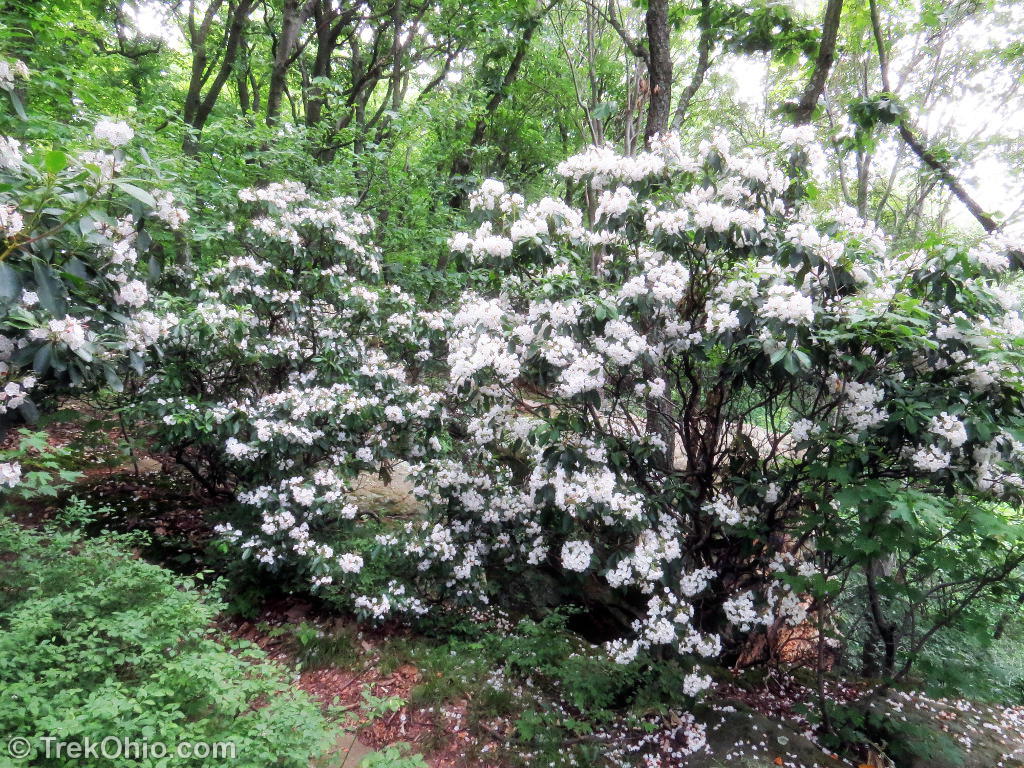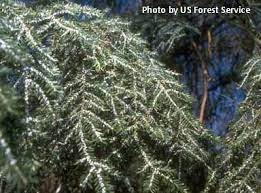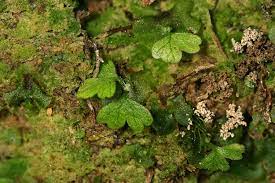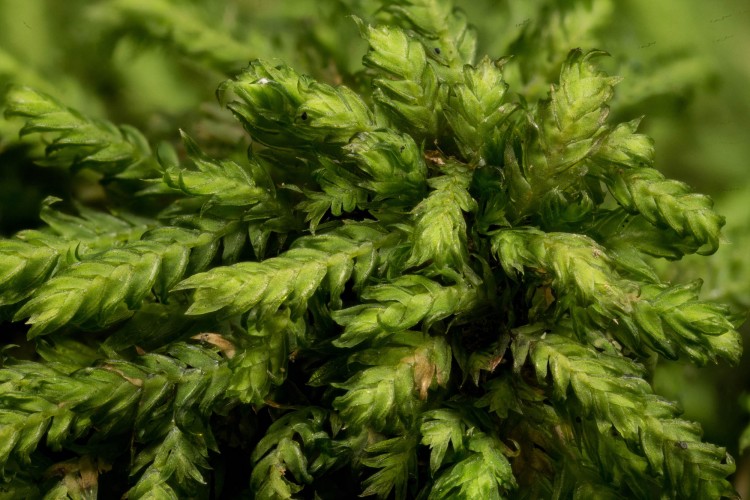An Analysis of South East Ohio Plants
An Analysis of South East Ohio Plants
While I regrettably was unable to join the EEOB 2210 field trip to the Deep Woods, I am able to give my best effort at a review of the plants found in this region.
Similar to the False Fen Frenzy Trip, there are several plants associated with the substrates underlying this mountainous region. Where the rest of Ohio was stripped away by glaciers and now holds limestone as its primary substrate, the Southeast corner boasts acidic sandstone and shale. Its dense forests are home to a number of species found predominantly in this zone, such as Hemlock (Tsuga canadensis), Pitch Pine (Pinus rigida), bellwort (Uvularia perfoliata), and Mountain Laurel (Kalmia latifolia). Further details on each species below!
-Tsuga canadensis
Hemlock is like every other conifer if the tree did not actively want to inconvenience you. It has soft needles, bark that doesn’t get your hands and hammock sticky, and its low hanging branches make for easy viewing. I love hemlock trees. The bark of this gorgeous tree is used by indigenous Americans medicinally, used in antiseptics and cold medicines. Squirrels and mice also eat at the scales of the cones to get at the seeds.
-Pinus rigida
Pitch pine grows 50-60 feet high, with needles clustered in 3’s. Its cones often remain on the tree for a long period of time when compared to other pines. Its bark is rough with deep cracks, and it has many twisting branches. Pitch pine became a major ingredient in turpentine, used to treat several respiratory ailments, while the Cherokee people used the pitch of the tree for canoe building.
-Uvularia perfoliata
It is a perennial wildflower that grows best in humus rich soil. It gets its scientific name from the connected leaf around the stem that appears to be pierced by the stem (perfoliate). Young shoots of this plant are edible and an asparagus substitute, the roots are also edible after cooking.
-Kalmia latifolia
The mountain laurel is a shrubby evergreen with clusters of showy, white to pink flowers. Its wood has been used for tool handles and tobacco pipes.

Mountain Laurel, courtesy of TrekOhio.com
A Friendly Forest Health Feature
Unfortunately not all ecosystems can be protected from perceived threats. Two of which threaten Ohio trees found in the South East corner, with details found below.
-Hemlock Wooly Adelgid
An aphid-like insect, the Wooly Adelgid sucks sap from the needles of Eastern Hemlock trees, and are named for their ID characteristic of producing white wooly forms along the base of needles of the tree. Management practices are currently being explored, though the insects are seemingly killed by intense winters. However, as temperatures continue to warm year after year, this yearly reset becomes less and less effective.
 Photo of Wooly Adelgid infestation courtesy of USFS / ODNR.
Photo of Wooly Adelgid infestation courtesy of USFS / ODNR.
-Sirococcus clavigignenti-juglandacearum (Sc-j)
Also known as butternut canker disease, symptoms include stem and branch cankers that may progress to join together and girdle the trees. The primary vector of fungal spore dispersal is rain-splash, though birds and insects are also implicated as spreaders. There are no management practices described quite yet (according to Purdue Extension at least) beyond killing heavily affected trees and reducing the harvest of healthy butternut trees to preserve any existing genetic resistance.
Appalachian Kryptonite (Gametophyte)
While I was not lucky enough to see this elusive plant in person, nor wise enough to complete the associated assignment before being tested on the material, the following covers the unique nature of Vittaria appalachiana. As generations of botanists have learned, the spore producing phase of the fern life cycle is the dominant phase. Fern sporophytes are widely recognized, while the gametophyte is much less straightforward. While some may have a longer lived gametophyte, the Appalachian Gametophyte is exclusively, you guessed it, a gametophyte. It has filmy, overlapping foliage, described as ribbon or shoestring like, with recognizable buds dedicated to reproduction.
Beyond this, one of the challenges to gemmae reproduction as opposed to spore reproduction, is size which does matter if you are only a few inches big. Get your mind out of the gutter! This is about ferns! Scientists Kimmerer (who’s Oologies episode I am currently listening to) and Young (1995) observed that dispersal is often animal assisted. Three ideas as to how gemmae are dispersed include water, wind, and animals, such as slugs (Kimmerer & Young). This limitation reminds me of Forsythe’s hypothesis for the limiting factors of Sweet Buckeye. Much to think about if we are going to continue to refer to bryophytes and smaller as miniature versions of large species.
The geologic basis for these limitations comes from the absence of V. appalachiana north of the glacial boundary. Despite suitable conditions, this bryophyte is not found in Ohio outside of its unglaciated area. This distribution implies that the ability to disperse over long distances has been lost over time, almost as if a more optimized for this purpose sporophyte of the plant had disappeared. Its precise stopping points support the theory that this shift in reproductive means occurred before or during the most recent Ice Age. As evidenced in Farrar’s 1990 dive into allozymes, the Appalachian Gametophyte cannot be sustained by a tropical sporophyte source. Genetic analysis also shows this wide dispersal only occurred when the climate of North America was favorable, as the plant’s formerly functioning sporophyte was the primary means for reproduction until it was lost and its range reduced.
 Photo courtesy of none other than the Course Companion Website!!! Thank you Dr. Klips for documenting this fascinating plant.
Photo courtesy of none other than the Course Companion Website!!! Thank you Dr. Klips for documenting this fascinating plant.
2 Ferns / Mosses of the Region
For my individual assignment I have elected to feature the Appalachian filmy fern, and the Yew-Leaved Fork Moss.
The Appalachain filmy fern, Trichomanes boschianum, is found commonly amongst the caves and crevices of non-calcareous rock in the South East corner. It is more commonly associated with the Southern Appalachian Mountains, and is state listed in Ohio. It is incredibly sensitive to ecosystem and environmental conditions, meaning it likely has a high CC value. It is described as delicate and thin, one cell thick at some points apparently, and gets its water directly from the rocks it is found under. What a fun plant, I hope to see it in person some day.
Photo Courtesy of A.L. Gibson, AKA the Buckeye Botanist.
Fissidens taxifolius, the Yew-leaved fork moss.
Found throughout Ohio, this pleurocarp moss comes from one of the most distinct genera of mosses. Don’t believe me? That info and the below photo came directly from Dr. Klips! Webmaster of the Ohio Moss & Lichen Association. I wonder how they decided which comes first in the organization title. I prefer mosses to lichen, but I’m sure many a member have brought this issue to light previously. Anyways, Fissidens can be found by taking a closer look at their non-spiraling leaf arrangement. Where other mosses tend to encompass their stems, Fissidens grows in pairs, resembling of course one of the superior conifers, a Yew. It is also described as equitant, though this is best seen under a microscope. 

Comments
An Analysis of South East Ohio Plants — No Comments